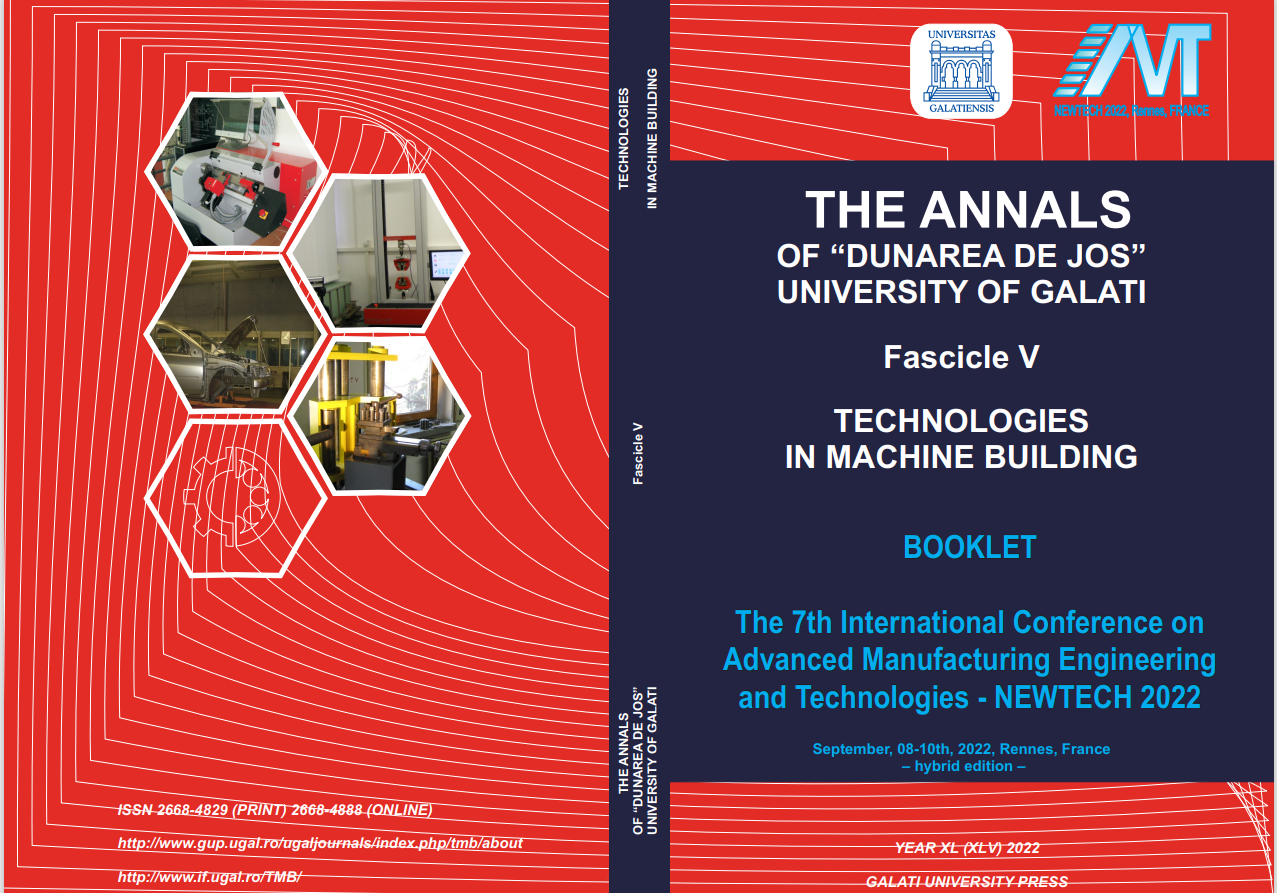The Influence of Lubrication on the Roughness of the Vibroburnished Surface
Abstract
One of the processes by which a hardening of the surface layer and a diminishing of the
heights of the surface roughness take place in the case of steel parts is vibroburnishing. In principle,
vibroburnishing involves a vibratory motion and a rolling of a small diameter ball on the surface to be
subjected to a vibroburnishing process. There are a large number of factors that can influence the
values of roughness parameters in vibroburnishing. These factors take into account the physicalmechanical
properties of the workpiece material, the surface roughness before applying
vibroburnihsing, the ball dimensions, the sizes that characterize the movement of the ball in relation to
the workpiece surface, the pressure of the ball on the surface being pro-cessed, etc. The analysis of the
conditions of use of the vibroburnishing process of some cylindrical surfaces showed that the heights
of the asperities resulting from the pro-cessing can be influenced by the use of lubrication during the
process. As such, the problem of conducting experimental research was formulated to highlight the
intensity of the influence exerted by some input factors in the vibroburnishing process on the
roughness of the processed surfaces, evaluated by using the roughness parameter Ra. An experimental
program was designed aiming to use different values of ball diameter, ball pressing force, initial
roughness, in conditions of dry processing and use of a lubricating oil. The experimental results were
processed using a software based on the least squares method. The determined empirical mathematical
models highlighted the possibilities of reducing by at least 10% the height of the surface roughness
when lubricating liquids were used, compared to vibroburnishing without lubrication. It was
considered that the presence of oil decreases the friction forces between the ball and the surface
asperities and causes a wider deformation of the test sample material under the action of pressing the
ball.


